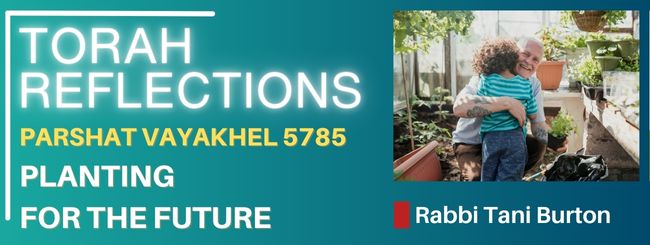בס”ד
Integrating Torah into one’s life through reflection and conversation can be an incredibly fun and engaging experience. It’s a journey of discovery, where ancient wisdom and timeless teachings come to life in our daily experiences. Through reflection, we have the opportunity to dive deep into the rich tapestry of Torah, extracting profound insights and lessons that resonate with our modern lives. The joy lies in the ‘aha’ moments, those instances when a Torah verse or story suddenly connects with our personal challenges, aspirations, and values. And when we engage in conversations about Torah with others, it becomes an interactive exploration, where diverse perspectives and interpretations enhance our understanding. These dialogues often spark excitement and intellectual curiosity, making the learning process both enjoyable and fulfilling. Torah becomes a vibrant and dynamic part of our lives, offering not just guidance but also a source of endless fascination, connection, and growth.
NOTE: Don’t feel obligated to go through every source or answer all the questions—unless you want to. Even one source, or one question will give you plenty of material for discussion and meditation. Enjoy this!
Some thoughts about Parshat Vayakhel
In Parshat Vayakhel, the Torah again lists the materials for the construction of the Tabernacle, including precious metals, fine fabrics, and a unique type of wood: acacia (or cedar) wood. This wood was used to construct both the Ark of the Covenant and the beams that formed the structure of the Tabernacle, the sacred space where G-d’s Presence would dwell among the people.
But where did newly freed slaves in the desert obtain such trees? The Midrash tells us that Jacob, the father of the tribes of Israel, planted cedar trees in Egypt generations earlier. He instructed his children to plant and preserve them, explaining that one day G-d would redeem them and command them to build Him a sanctuary. These were the very trees used in the Tabernacle, passed down and cared for over centuries.
This remarkable act of foresight teaches a timeless truth: we are called to live in the present with faith in the future. Jacob planted for a redemption he would never live to see. He understood that Israel’s time in Egypt—however long and bitter—was temporary, and he took action in his own time to support a divine future he believed in.
A Universal Message: Invest Today with Vision and Purpose
This story carries a profound message for Noahides as well: what you do today matters for eternity. Like Jacob, each of us has the opportunity to plant spiritual seeds—acts of justice, kindness, learning, and prayer—that may blossom long after we are gone. We don’t need to see immediate results to know that we are participating in something much greater than ourselves.
The materials for the Tabernacle were donated by “everyone whose heart moved them.” In the same spirit, Noahides are called to build lives that are open to G-d’s Presence—through moral action, humility, and a commitment to truth. When you live with this intention, every action becomes like one of Jacob’s trees: part of the structure that prepares the world for redemption.
Living with Redemptive Vision
We live in a world that often feels disjointed or broken. But Jacob’s example shows us that the future is shaped by those who live with faith and vision—those who see beyond the moment and act according to divine purpose. Even when exile feels long, redemption is already being prepared by the hands and hearts of those who believe.
May we all be blessed to act with this redemptive vision—to plant wisely, build faithfully, and prepare the world to be a dwelling place for G-d’s presence.
Now, reflect on the following questions:
- What does it mean to plant spiritual seeds for a future you may not live to see? Can you think of examples in your life?
- How do your current choices—big or small—help build something greater for others or for future generations?
- In what ways can Noahides help make the world more open to G-d’s presence, like preparing the beams for the Tabernacle?
- How does Jacob’s long-term vision inspire you to act with faith even when the results aren’t immediate?
- What steps can you take today to live with a sense of purpose that aligns with G-d’s unfolding plan for the world?
Shabbat Shalom!
By Rabbi Tani Burton
If you want more questions for contemplation, SEE THE OTHER BLOGS FROM RABBI TANI BURTON ABOUT DE PARSHAT QUESTIONS
© Copyright, all rights reserved. If you enjoyed this article, we encourage you to distribute it further.
Our blogs may contain text/quotes/references/links that include copyright material of Mechon-Mamre.org, Aish.com, Sefaria.org, Chabad.org, and/or AskNoah.org, which we use in accordance with their policies.
